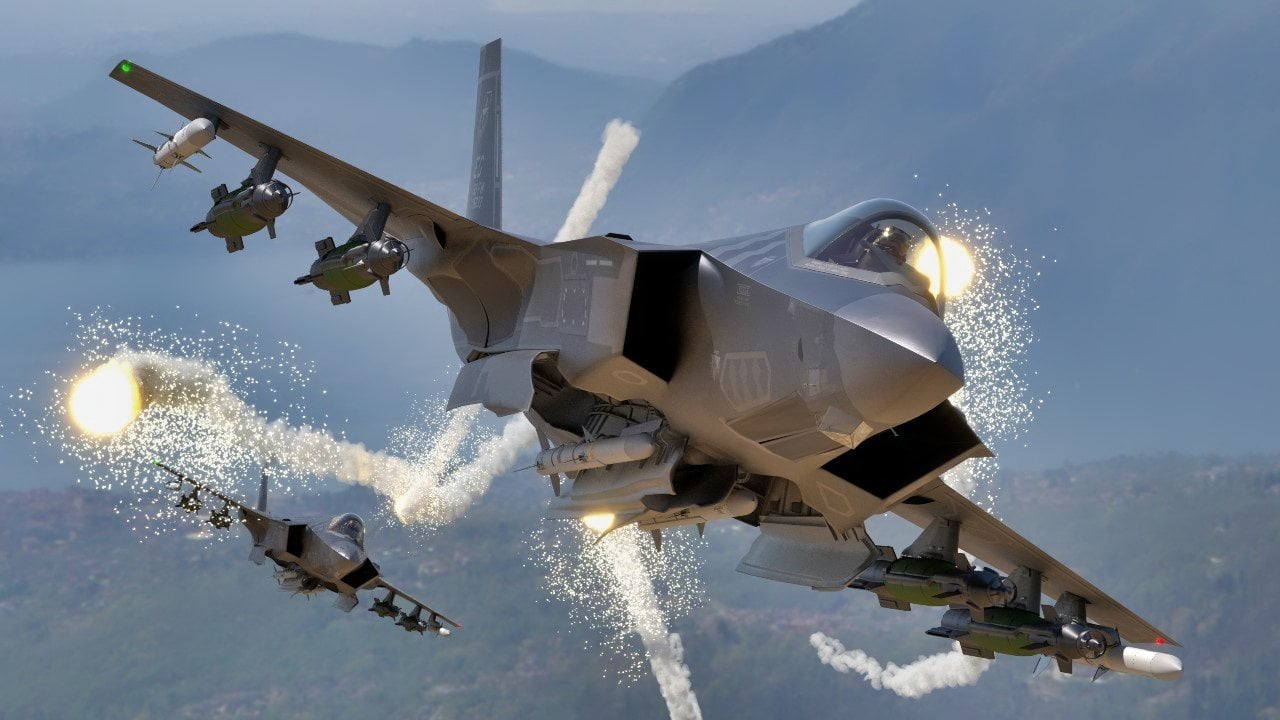The U.S. Military's F-35 Fighter Nightmare Is Now Over

Summary and Key Points: The U.S. Department of Defense will soon resume accepting new F-35 Lightning II aircraft from Lockheed Martin, following a year-long pause due to delays in the Tech Refresh-3 (TR-3) software upgrade.

-This upgrade is essential for the Block 4 models, enhancing digital infrastructure, data processing, and weapon systems. Nearly 100 F-35s had been in storage, and Lockheed Martin will only cover up to $100,000 in weather-related damages, leaving taxpayers to potentially cover additional costs.
-The TR-3's approval means deliveries can start, but a significant backlog and ongoing production could see deliveries stretch over a year. The TR-3 provides crucial advancements for the F-35, including improved sensor suites, weapon capabilities, and electronic warfare features, ensuring the jet remains at the forefront of modern combat.
Pentagon to Resume F-35 Deliveries After Year-Long Freeze
The United States Department of Defense (DoD) will begin to accept new Lockheed Martin F-35 Lightning II aircraft in the coming days after a year-long freeze has been lifted. The head of the program executive officer had approved the "truncated" version of the Tech Refresh-3 (TR-3) software upgrade.
The TR-3 is meant to provide numerous enhancements to the Block 4 models of aircraft, and its delay has caused the Pentagon to refuse to accept any new F-35 aircraft since last July.
"On July 3, Lt. Gen. Mike Schmidt, program executive officer, F-35 Joint Program Office, after extensive coordination with the Services, Joint Strike Fighter Executive Steering Board, pilots, maintainers, and industry, made the decision to move forward with the truncation plan for TR-3 software," F-35 Joint Program Office spokesman Russ Goemaere said in a statement.
Goemaere added that the deliveries of the fifth-generation fighters would "resume in the new future."
Nearly 100 of the advanced aircraft had been sitting in storage – and it was reported earlier this month that aviation giant Lockheed Martin would only be responsible for covering to $100,000 in any damage that the aircraft might receive from weather-related incidents. U.S. taxpayers might be forced to pick up the bill for any repairs that are required as the result of the Lightning IIs being stored on the tarmac.
TR-3 Efforts Will Continue
Even as the abridged TR-3 has been accepted, efforts will continue to finalize the software package, which may not occur until later this summer or early fall.
"Right now we're very much focused on the TR-3 upgrade, software upgrade, to the [F-35] jet. And as you know, Lockheed Martin had some issues with stability of that software package. So we've held up signing the jets over to the Air Force for the last few months. And so we're very much focused on unwinding that hold up. And I'm hopeful that those jets will start to be delivered this month," Gen. Kenneth Wilsbach, the head of Air Combat Command, said during a virtual Mitchell Institute for Aerospace Studies event on Wednesday afternoon.
The significance of TR-3 can't be overstated, as it is far more than merely patching software on a computer. It is akin to a full version upgrade and more. This upgrade is crucial for enhancing the jet's digital infrastructure and weapon systems.
Stavros Atlamazoglou for The National Interest explained that the TR-3 "will upgrade the F-35’s onboard digital infrastructure, improving its data storage and processing capabilities; and improve the user interface, thus making the pilot’s life easier. The new software will also enable the stealth fighter jet to carry new air-to-air and air-to-ground weapons, sensors, and cyber countermeasures."
Atlamazoglou added, "Complicating matters even further is the fact that the upcoming Block 4 upgrade needs the TR-3 as a software upgrade as a base."
According to the JPO, TR-3 provides "the computational horsepower to support modernized Block 4 capabilities for the F-35 including: new sensor suites, more long-range precision weapons, improved electronic warfare features, more powerful data fusion, and increased cross-platform interoperability. These capabilities provide the warfighter a combat-edge to identify, track, engage, and survive against advanced air, ground, and cyber threats. TR-3 significantly updates core processing power and memory capacity, which will allow the F-35 to run advanced software packed with state-of-the-art warfighting capabilities."
Deliveries to Commerce – But Backlog is Significant
Schmidt's approval clears the way for the aircraft to finally make their way to the U.S. military and foreign operators.
Lockheed Martin, the prime contractor of the F-35 Lightning II, has said it could deliver the F-35s at a rate of one plane per day, but questions are being raised if the defense contractor would be able to actually follow through. The Government Accountability Office (GAO) has suggested a more realistic timeframe would see the jets being delivered over the course of a year, in part due to the fact that production of the stealth fighters has continued even as the Pentagon refused to accept the aircraft.
The first F-35 Lightning II fighters that were supposed to be equipped with the TR-3 upgrade were completed at Lockheed Martin's assembly line in Fort Worth, Texas, last July, Defense News reported. They have been piling up since. The completed aircraft will still need to receive the truncated TR-3 and be thoroughly inspected to be readied for delivery.

That has created a situation where the manufacturer will now be producing the aircraft faster than they can be delivered – especially as Lockheed Martin achieved full-rate production (FRP) earlier this year, and is on track to deliver upwards of 156 Lightning IIs per year by the end of 2025.
Author Experience and Expertise: Peter Suciu
Peter Suciu is a Michigan-based writer. He has contributed to more than four dozen magazines, newspapers, and websites with over 3,200 published pieces over a twenty-year career in journalism. He regularly writes about military hardware, firearms history, cybersecurity, politics, and international affairs. Peter is also a Contributing Writer for Forbes and Clearance Jobs. You can follow him on Twitter: @PeterSuciu. You can email the author: Editor@nationalinterest.org.
All images are Creative Commons or Shutterstock.
